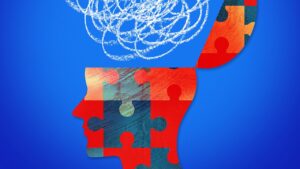Posted on June 17, 2024 in ASRC News, Neuroscience Initiative

Scientists tease out how low dopamine plays a role in solidifying our familiarity with objects and experiences.
Dopamine is the brain’s learning molecule: It sends messages when we encounter something new that makes us excited or curious. But how exactly does dopamine help the brain distinguish between what’s familiar and what’s new? Researchers with the Advanced Science Research Center at the CUNY Graduate Center (CUNY ASRC) hypothesized that the novelty of an object or experience becomes prominent when spiking dopamine levels are contrasted against the low dopamine levels produced in response to more familiar stimuli in an environment.
“If you were to go to the same café every day, you would easily be able to tell when something is new, like if they got different chairs,” said Susana Mingote, principal investigator of a recently published study in the European Journal of Neuroscience testing the hypothesis. “But if it’s only your second time at this café, you might not notice if something is new because everything is still new to you,” added Mingote, who is a lead researcher with the CUNY ASRC’s Neuroscience Initiative and a professor of Biology and Cognitive Neuroscience at the CUNY Graduate Center.
To test this theory, the researchers conducted an experiment where mice were introduced to two identical objects in an open-field test. For some of the mice, one of the objects was replaced each day, while other mice continued to interact with the same objects over multiple days before a change was made.
The researchers found that the group of mice exposed to the first object multiple times quickly recognized the new object as novel and spent more time interacting with it. In contrast, the group of mice with only one exposure to the first object treated both it and the new object as equally novel.
Taking it a step further, Mingote’s team repeated the experiment using chemogenetics to block the activity of dopamine neurons in the ventral tegmental area (VTA) and artificially decrease dopamine levels in mice after their first exposure to an object. Remarkably, upon second exposure, these mice behaved as if they were very familiar with the object despite only having interacted with it once.
“We saw that they perceived a relatively new object as very familiar and immediately moved to interact with another new object that we put into the environment,” said Mingote. “This suggests that low levels of dopamine may promote the configural memory of an environment. The object is now part of this environment, part of the background, and that helps you notice when new objects appear in the foreground.”
The study targeted dopamine neurons in the VTA, but these neurons project to different parts of the brain involved in memory, including an area called the lateral internal cortex. The researchers plan to explore dopamine’s role in familiarization and memory consolidation in these other areas in the future.
The team’s findings have potential applications in research aimed at understanding cognitive aging. As we age, there’s a natural bias towards familiar stimuli, accompanied by a decline in dopamine levels. Mingote’s team aims to investigate if this decrease in dopamine contributes to our tendency for familiarity as we age. Furthermore, understanding how dopamine neuron degeneration in cognitive aging diseases affects memory could help us better understand and treat memory-affecting diseases like Alzheimer’s.
This study was funded by the National Institute of Mental Health.
